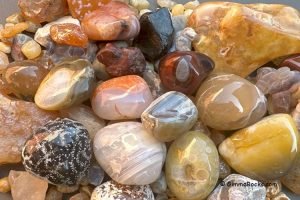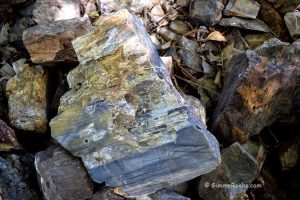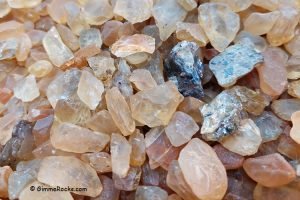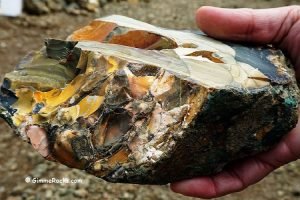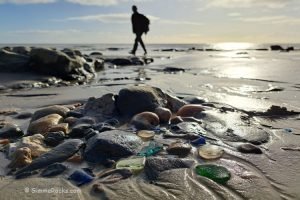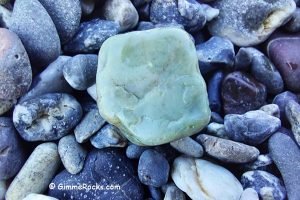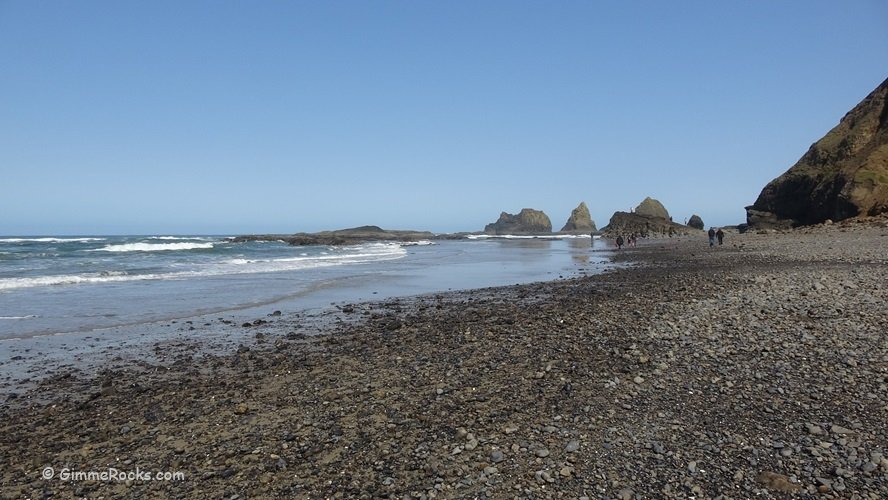
Oregon's coastline stretches for 300 miles from Astoria in the north to Brookings in the south, and it is full of stunning beaches, each with its unique charm.
Along this expansive shore, you'll find everything you can expect to see on the scenic coast, from wide sandy beaches and dunes to secluded coves, colorful cliffs, towering sea stacks, and dramatic basaltic ledges carved with sinkholes and channels that send seawater exploding into the air.
Oregon beaches are among the most productive rockhounding spots in the US, where you can find various interesting rocks, from agates and jasper to petrified wood and quartz. Agates are the most abundant here, varying by type and size, so that you can be rewarded with a wide range of collectible rocks.
Why Oregon is a Rockhounding Paradise?
Oregon's coastline is geologically diverse, including gravel bars, eroded cliffs, and riverbeds flowing into the Pacific. Gravel bars make it easier to find collectible rocks among regular rocks. Eroded cliffs reveal treasure hidden from human eyes for millions of years. And the rushing river brings you beautiful rocks while polishing them on the way.
Ocean Beach Rockhounding: A Simple Guide to Finding Treasures

Public Beaches
All of Oregon's beaches are public and accessible for rockhounding. Collecting rocks is allowed in most places, but there are some restrictions.
Oregon Coast Rockhounding Regulations
Under Oregon state law, collectors can gather up to 1 gallon of agates per day, with a maximum of 3 gallons per year. In addition to agates, you can also collect jaspers, petrified wood, and invertebrate fossils. Still, it's essential to stick to surface collecting without the use of heavy tools.
Removal of vertebrate fossils is prohibited without a permit. Be aware that fossils cannot be taken from areas designated as Marine Protected Areas. For more information, consult the Oregon Marine Reserves Rules.
Seasonal Benefits
During the winter, storms and high tides reveal new layers of gravel, making it easier to uncover hidden treasures. The good news is that some beaches remain productive year-round.
Minerals and Fossils You Can Find on Oregon Beaches
Agates: The Oregon coast is famous for its agate-rich beaches. You can find agates in various colors and patterns, including the prized carnelian and rare blue Newport agates.
Jasper and Chert: Beautiful pieces of jasper and chert can be found across Oregon's coastline. You can find green varieties of jasper on the North Coast, while red brecciated jasper is abundant on the Southern Coast.
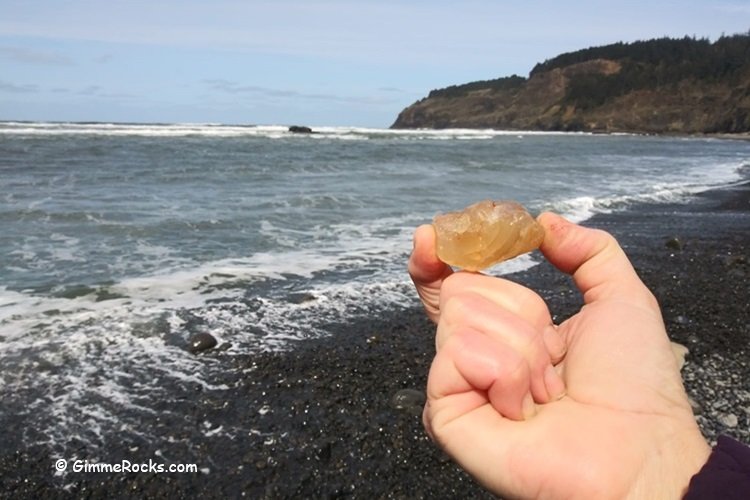
Petrified Wood: Many beaches along the coast yield beautiful pieces of petrified wood, highly prized by collectors.
Quartz: Quartz is one of the most common beach minerals. The quartz is often milky white with gray to black banding. Sometimes, you can find rare Gold-Bearing Quartz.
Nephrite: The southern Oregon Coast, particularly between Gold Beach and the Oregon-California border, is known for rare Nephrite Jade.
Marine Fossils and Shells: The coastal cliffs and outcroppings hide fossil treasures, particularly marine fossils like mollusks. The sandy beaches are great for searching for shells, sand dollars, and even the occasional mammal bones.
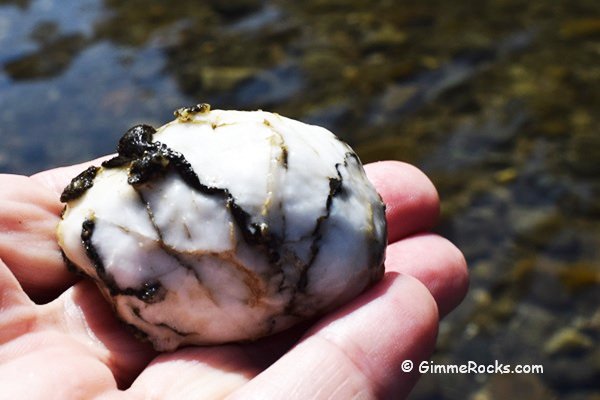
Top Oregon Beaches for Rockhounding
Some of the best Oregon beachcombing and rockhounding spots include:
- North Coast: Short Beach and Tunnel Beach.
- Central Coast: Gleneden Beach, Beverly Beach, Moolack Beach, and Bob Creek Beach.
- South Coast: Bailey Beach, Pistol River State Scenic Viewpoint, McVay Rock Park, and Crissey Field State Recreation Site.
My favorite beaches are Short Beach, Tunnel Beach, Bob Creek, Pistol River State Scenic Viewpoint, McVay Rock Park, and Crissey Field State Recreation Site. These places have extensive gravel bars that are productive year-round.
North Coast
Short Beach
Short Beach is a small cove 1 mile south of Cape Meares and 1.3 miles north of Oceanside in Tillamook County.
The beach stretches 900 yards, and it is great for agates (including black, banded, carnelian, and hydro) and jaspers. You can also find zeolites such as mordenite, clinoptilolite and heulandite. Bring a hammer, geology pick, and gem scoop to make collecting easier.

Tunnel Beach
Tunnel Beach, near Oceanside, Oregon, is a secluded spot accessible through an artificial tunnel carved into the basalt cliffs of Maxwell Point.
The tunnel, built in 1926, provides access to this hidden gem, though it can also be reached by walking around Maxwell Point during super low tides.
This 300-yard sand and cobble stretch is a prime agate hunting location. Typical finds include clear agates, green, blue, and yellow jaspers, zeolites, and marine fossils.

Central Coast
Gleneden Beach
Gleneden Beach is a broad, sandy stretch of shoreline between Lincoln City and Depoe Bay, extending from Salishan Spit to Schoolhouse Creek. It is a fantastic location for rockhounding, hiking, surfing, fishing, and picnicking.
Gravels near Schoolhouse Creek reveal agates, jaspers, and fossils. While most of the beach is sandy, this rocky area is an excellent spot to find unique coastal treasures.
Gleneden Beach - The Spot For Rockhounding, Surfing and Picnicking
Beverly Beach
Beverly Beach State Park, 6 miles north of Newport, is a great spot for rockhounding, hiking, beachcombing, and wildlife viewing along its 1.5-mile stretch from Otter Rock to Spencer Creek. The park has a large campground and a scenic beach walk under the highway bridge and is known for its rare "ghost forest," where ancient tree stumps occasionally emerge from the sand after storms.
Beverly Beach is a popular agate hunting spot, especially for agates, jasper, petrified wood, and marine fossils. The best areas to search are gravel bars, which often yield larger pieces.
Beverly Beach - Rockhounding In Ghost Forest
Moolack Beach
Moolack Beach, 4 miles north of Newport, is a quiet, 3.5-mile sandy shore extending from Spencer Creek to Yaquina Head. Despite its proximity to Newport and other coastal towns, it remains an uncrowded and peaceful spot for hiking, beachcombing, and enjoying the ocean.
Moolack Beach is a prime spot to find agates (including carnelian), jaspers, and fossil shells, particularly near Moolack, Coal, and Spencer Creeks. Vertebrate fossils may also be found, but collecting them requires a special permit.
Moolack Beach - Large Sandy Beach With A Scenic Park
Bob Creek Beach
Bob Creek Beach, part of Neptune State Scenic Viewpoint, is a small, picturesque beach about 6 miles south of Yachats. It is known for its dramatic basalt slabs, tide pools, cliffs, and caves. The beach also has a protected shell midden area and is part of a marine reserve, so fishing and disturbing the protected area are prohibited.
Bob Creek Beach is a prime spot for finding jasper, petrified wood, shells, sea glass, and other unique rocks, especially during low tide. Remember to avoid digging near the shell midden and follow local rockhounding regulations.
Bob Creek Beach - Rockhounding Among Basalt Slabs, Cliffs And Caves

South Coast
Bailey Beach
Bailey Beach is a secluded 3-mile sandy shore extending from Otter Point to the Rogue River North Jetty, a few miles north of Gold Beach. The beach is great for rockhounding, beachcombing, tidepool exploring, fishing, and clamming. You can find agates and other interesting rocks scattered along the beach, particularly after storms.
Bailey Beach - Secluded Spot With A Sea Cave
Pistol River State Scenic Viewpoint
Pistol River State Scenic Viewpoint, located 9 miles south of Gold Beach, has grassy dunes, stunning rock formations, and a winding river that meets the Pacific Ocean. Known for its windsurfing, wildlife watching, and beachcombing, this area is also home to the annual Pistol River Wave Bash windsurfing competition held in June.
Pistol River is a great rock-hounding spot, especially near the bridge off Highway 101. In the gravel, you can find quartz, agates, jasper, and petrified wood. The best areas for rock collecting are along the riverbanks and shoreline.
McVay Rock Park
McVay Rock State Recreation Site, located just south of Brookings near the Oregon-California border, is a scenic beach with basalt formations, tidepools, and towering cliffs. The park has a grassy area, an off-leash dog park, and a short trail leading to the beach. The beach also has a unique redwood stump embedded in the sand.
McVay Rock Beach is a prime spot for year-round rockhounding. Gravel bars near the Chetco River hide agates, brecciated jaspers, quartz, petrified wood, sea glass, and nephrite jade. Tidepool exploring is also popular, with various marine life visible during low tide.
McVay Rock Park - Rockhounding, Scenic Tidefools, And A Massive Redwood Stump
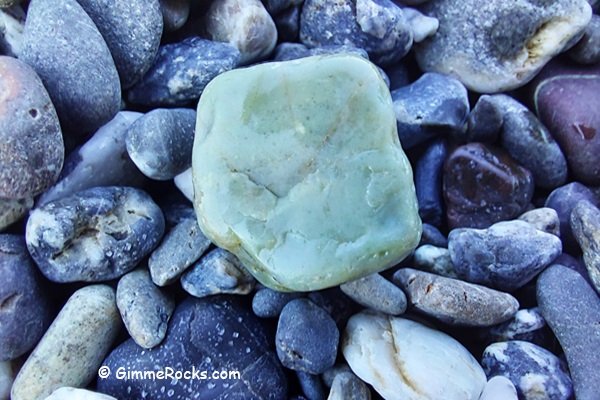
Crissey Field State Recreation Site
Crissey Field State Recreation Site, located at the Oregon-California border near Brookings, is a 40-acre park by the Winchuck River. Once an airfield, it is now a park with beach access, hiking, picnicking, and fishing. The beach is sheltered from ocean winds, making it a perfect destination for peaceful strolls and relaxation. The park also has a welcome center with information about Oregon's natural attractions.
Crissey Field Beach is a top rock-hounding spot near the river mouth. Agates, red and green jasper, quartz, jade, and driftwood are scattered along the beach. The gravel beds by the river are particularly productive, even during summer.
Crissey Field State Recreation Site - Airfield Turned Into Park

